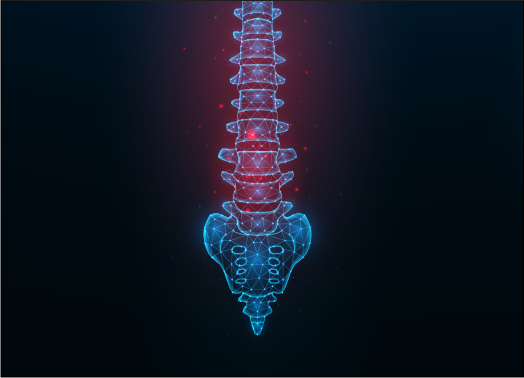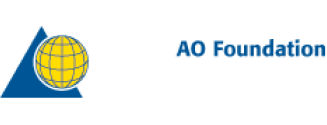Spine
Spinal Treatment
Your spine specialists in Munich: Treatment of Back Pain
Diseases and injuries to the spine are a common reason for a visit to the doctor. Roughly 10 percent of our population suffers from chronic back or neck pain that requires treatment and which can lead to significant restrictions in our everyday life or even disabilities.
Causes
Diagnosis
Treatment – conservative
Your advantages at OrthoCenter Munich
- Orthopedic treatment focus on spinetherapy
- Wide range of conservative and operative procedures
- Gentle procedures in focus: Dr. Riedel specializes in gentle pain therapy. He was head physician in various pain clinics for over 20 years
- Joints and surgical expert: Prof. Dr. Lill specializes in the treatment of joints. He has years of experience in the field of minimally invasiveand arthroscopic ops.
- Cooperation with clinics and research institutes worldwide
- Renowned private practice: the OrthoCenter is internationally known and repeatedly welcomes patients from abroad who come to Munich for treatment
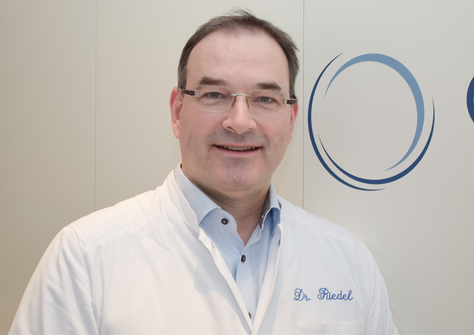
Your Spinal Specialist
Dr. med. Riedel
YOUR CONTACT PERSON FOR CONSERVATIVE TREATMENTS
If conservative pain therapy is in order, Dr. Riedel shall be in charge of the procedure. He has extensive experience in this field. Make an appointment online with us at the OrthoCenter Munich!
Spinal Surgery
Treatment – operative
If the conservative treatment methods mentioned above do not provide the desired pain relief, if there is severe damage to the spine or even paralyses, operative therapy options have to be considered.
A number of painful diseases or injurie to the spine can be significantly improved if not cured with an operation. The selection of treatment methods is based on the type and localisation of the causative disorder.
As a result of the constant technical progress in medicine, we essentially use state-of-the-art, so-called minimally invasive techniques that do not damage tissue.
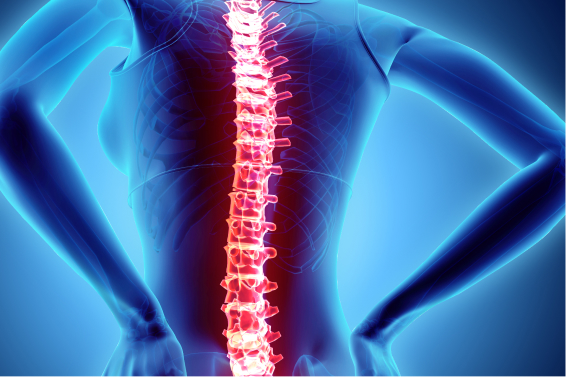
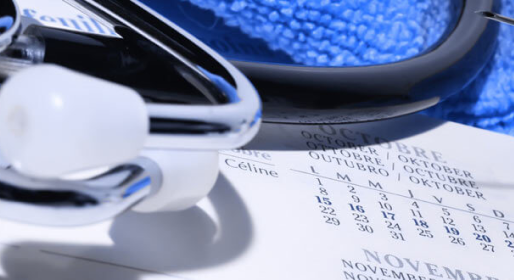
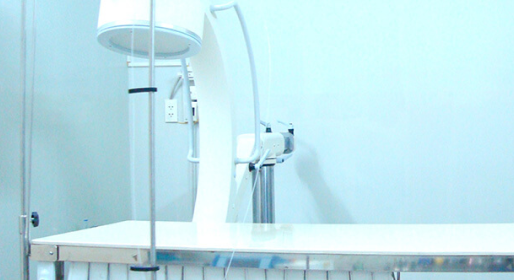
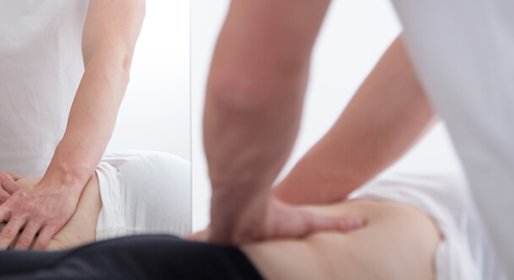
These days, an extremely narrow spinal canal (spinal canal stenosis) can be extended as a standard procedure without damaging the tissues (decompression). The same applies to microscopic or endoscopic vertebral disc surgery. If the vertebral discs are already too far advanced in their degeneration, they will be replaced with modern and biocompatible prosthesis in a minimally invasive procedure (disc end prosthesis).
One alternative to disc end prosthesis is dynamic stabilisation of the degenerated spine segment in a minimally invasive procedure. This procedure is only used when it is not only the disc that shows advanced degeneration, but also the spinal joint.
Vertebral body fractures can be erected – depending on the type of fracture – in just as minimally invasive a manner with a balloon and augmented using a special bone cement. This operative procedure (kyphoplasty) makes it possible to bear loads immediately without aids.
If there is advanced degeneration of the affected spinal structures, inflammation (rheumatic instability), infections (spondylodiscitis), distortions (scoliosis, kyphosis) or tumours, we employ rigid short or prolonged stabilisation procedures. In some cases, minimally invasive techniques can also be used for this, but usually an open reconstructive procedure is necessary.
Spinal Surgeon
Dr. med. habil. Ralf D. Rothörl
YOUR CONTACT PERSON FOR SURGICAL TREATMENTS
PD Dr med. Rothörl, an expert with many years of experience in the field of spinal surgery, will take care of your back problems and develop the suitable treatment for you! Make an appointment online with us at the OrthoCenter Munich.
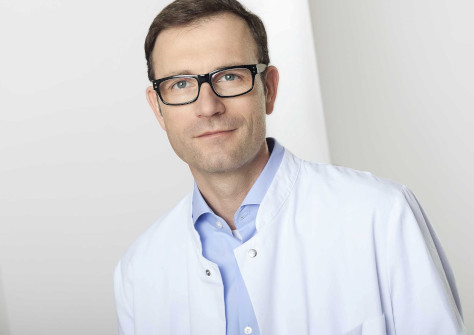
WE OFFER FOLLOWING TREATMENTS:
Neck pain
Symptoms
Neck pain can occur similarly isolated as in the lumbar spine and lead to tension, which reach into the back of the head or shoulder area. Also dizziness may occur. If it comes to pinching or harassments of nerve structures in the spinal cord or the nerve exit channels are radiating pain in arms, hands and fingers (“Brachialgie”) set. Sometimes the patient complains of numbness and tingling on, but also about paralysis and gait unsteadiness. Only rarely, in the occurrence of paraplegia with impairment of bladder and bowel evacuation.
Treatment
First of all, it’s important to find out about the cause of neck pain on the basis of a detailed personal interview with clinical examination and with the help of additional investigations (X-ray, MRI, CT) to determine. Potential for serious damage is excluded, we will treat the neck pain in our facility with modern, evidence-based methods. Medications, spine and X-ray guided injections near or multimodal treatment programs come in the context of a phased plan – depending on the type and cause of complaints – to use.
Lower back pain
Treatment
Lumbago is more a condition than a diagnosis, which is why it needs to be treated acutely at first. After a lumbago spell it is advisable to rest a few days to take some pressure off the spine. It may be necessary to take pain reduction medication if the back pains persist. Additionally chiropractic therapy can lead to the desired long term result – it gently loosens blockades in the vertebral joints of the back. Specific use of physiotherapy can also contribute to long term pain relief.
Prevention
To prevent the reoccurrence of lumbago you should take long term prevention measures. Regular sport activities strengthen your back muscles and reduce the lumbago risk to a minimum. Swimming, cycling and Nordic Walking are sports that strengthen the back. Make sure you increase the frequency and intensity of the exercise sessions slowly! By the way, overweight is an absolute risk factor for lumbago. The spine of overweight people has to carry more weight, thereby increasing the probability of back problems. Also, the experienced pains can be much more intense. A normal or ideal body weight lowers the lumbago risk considerably.
Cervial spine
Symptoms
A herniated disc leads to increased pressure on the back nerves, mostly in the area around the lumbar spine and the cervical spine. The pressure on the local nerves causes severe pains that can manifest themselves in various extremities. Patients also often experience loss of feeling, numbness and paralysis of, for instance, the leg. Studies have, however, proven that herniated discs are only painful if the nerve root has already been sensitised. A competent examination by a specialist can clarify the situation.
Diagnosis
If you visit a doctor with a suspected herniated disc, you will be examined via MRI (magnetic resonance imaging) or CT (computer tomography). This enables the specialist to locate the problem. There are numerous therapy methods. If you suffer from chronic pain, it is highly likely that surgery is necessary. Swift surgery to prevent lasting nerve damage is also necessary if you experience paralysis symptoms of any kind. If the herniated disc is not too severe, it is recommendable to thoroughly explore conservative treatment methods.
Facet joints arthritis
Symptoms
Since the facet joint osteoarthritis under load typically becomes symptomatic, most patients feel their pain most intense in the morning (“attempt pain”), bending and straightening and physical stress increase the discomfort. Also in the weather is prevalent in osteoarthritis. Isolated pain in the affected part of the spine are the most common symptoms, occasionally accompanying painful radiations can occur in arms or legs.
Treatment
Many patients feel the discomfort caused by the facet arthrosis be extremely prejudicial because the pain can be very severe and restrictive movement occur. Nevertheless, the following applies: facet joint osteoarthritis can be treated conservatively usually good – for example, by infiltration of the vertebral joints or physiotherapy.
Spinal stenosis
Causes & Symptoms
The spinal stenosis is mainly caused by related changes in the intervertebral discs, vertebral bodies and joints due to wear. These changes are age-and load-dependent and generally spread widely in slight variations. It is not so much the question of whether these changes are of wear, but more the question of how quickly progresses the narrowing and how they in turn leads to complaints.
Typically the spinal canal narrowing is a result of nerve irritation with painful diffuse radiations in the legs accompanied. The walking distance is reduced in part to a few hundred meters. The pain improve spontaneously by sitting down or bending forward over the upper body. This also is often an unconscious posture. Also diffuse phenomena numbness or weakness in the legs belong to the typical symptoms. The spinal stenosis is progressive and progresses at different rates, i.e. the severity and extent of symptoms increase. Neurological deficits, such as paralysis are rare.
Treatment
The current study situation is a matching mind again that the operative conservative treatment is superior. Nevertheless, conservative treatment measures should be initiated at the beginning of therapy, which consist of a multimodal therapy concept. This includes physical rest, avoiding greater physical stress while maintaining mobility, pain and anti-inflammatory drugs, physiotherapy and physical measures and a delordosing orthosis. If it is persistent complaints are near spine infiltrations (PRT, epidural) inserted under fluoroscopy. Are the conservative treatment measures over a period of 6 weeks not showing any positive effect or neurological deficits even objectively, surgical therapy is indicated. In the case of paralysis should be promptly intervene surgically. In the foreground of surgical therapy is still valid as “golden standard” function preserving the “minimally invasive” surgical micro-expansion of the spinal canal using the microscope.
Vertebral fracture treatment
Causes & Symptoms
The main causes of injury-related vertebral fractures include traffic accidents (car, motorcycle), falls from heights and sports injuries.
Immediately occurring neck or back pain is one of the most common symptoms, in addition there may be restrictions on movement and neurological deficits. These include numbness, paralysis up to paraplegia injuries in the cervical and thoracic spine.
Treatment
A vertebral fracture is treated with conservative or operative measures so that in the long run the structure and function of the spine can be recovered. The initiation of a professional treatment is initially dependent on the imaging diagnosis. Using native X-ray CT examination and additional stability of the injury can be assessed. Stable vertebral fractures can usually be treated conservatively well. In terms of early functional treatment over a period of 6 to 12 weeks come next physical conservation, analgesic and anti-inflammatory drugs and physiotherapy targeted therapy with concomitant brace treatment used. If it is an instable vertebral fracture the different operational methods to use are depending on the extent and location of the injury. These include superficial stabilizing measures (instrumentation), affecting both the anterior and/or posterior column.
Spondylolisthesis
Symptoms
Slipping vertebras often develop pain-free and unnoticed. However, some patients experience severe pains. During a symptomatic progression any spinal exertion can cause severe back pains. Many patients feel their lumbar spine is instable. In severe cases of slipping vertebras the sensitive nerve roots can become constricted, which leads to neurological symptoms such as numbness and signs of paralysis.
Treatment
Slipping vertebras can be treated in every stage of the disease, as the slipping can be stopped at any time. However, there is an increased risk of neurological symptoms in the more advances stages. Conservative treatments are, in general, the favoured choice. Surgery is only taken into consideration in the event of neurological deficiencies, extreme suffering or a massive increase of slipped vertebras. In many cases the affected vertebral body will be stiffened, which – depending on age and activity level of the patient – can lead to various levels of impairment in everyday life. Therefore it is vital to weigh the pros and cons of surgery carefully. Your expert can clear matters up and inform you about all the options that are currently available.
Rheumatic instability
Symptoms
The symptoms of rheumatoid arthritis can vary greatly. Often you can find at first swelling and morning stiffness of fingers and wrists, but also the large joints of the body can be affected. In the spine, especially the cervical spine is affected. This leads to pain and loss of motion. In advanced patients notice changes to some extent shooting pains, sometimes neurological deficits in the form of numbness of the arms and legs also, paralysis and gait unsteadiness.
Treatment
Timely diagnosis and appropriate medical therapy, the inflammatory process and thus the destruction of the joints and ligaments the rheumatic instability is trying to stop treatment prematurely. This not only reduces the discomfort of the patient, but also possible long-term complications that may need surgery to restore mobility. Here, in addition to anti-inflammatory painkillers (NSAIDs) and corticosteroids, methotrexate (MTX) and agents against tumor necrosis factor alpha used. When complaints with evidence of instability in the spine surgical treatment is required. The aim of surgery is to correct the deformity, to stabilize the affected spinal segment and to prevent deterioration of the spinal cord and other nerve structures. This is to improve the quality of life by reducing pain succeed.
Spondylodiscitis
Symptoms
The primary focus is non-specific back pain, corresponding to those of strength and propagation, which can be caused by wear-related changes in the spine as well. Pain occurs especially at night or during exercise and are sometimes accompanied by night sweats, fever or weight loss. Very characteristic is a strong knock and tenderness of the affected vertebrae.
Treatment
The prerequisite for a successful therapy to cure spondylodiscitis is the immobilisation of the spine affected portion and the antibiotic therapy. This may well succeed even under conservative conditions. Depending on the extent of the disease, but surgical treatment is required. An operation is especially necessary if antibiotic therapy does not lead to improvement of symptoms or neurological deficits occur. The disc tissue is surgically removed, the adjacent vertebral bodies locked together to prevent any movement in the affected segment.
Kyphosis
Causes
Reoccurring vertebral body fractures are mostly caused by osteoporosis.
Treatment
In most cases the surgery is performed under general anaesthetic. The surgical tool is inserted into the affected vertebral body using a minimally invasive technique. After that, the surgeon implants a balloon or the so-called “Vessel X” material. The container is then filled with bone cement, thereby straightening up the vertebral body to its original height. The container can be removed after the cement has hardened. The wound healing is normally very unproblematic due to the fact that no more than a tiny skin incision is needed. Many patients report a significant improvement of their condition after the procedure. By the way, younger patients can opt for the so-called bio-cement instead of regular bone cement. The bio-cement decomposes after a few months, which means there will be no alien material whatsoever left in the spine.
Scoliosis
Symptoms
As a child or as an adolescent a spinal curvature prepares , depending on the severity, usually no or only very rarely back pain. However, other symptoms and/or problems can be caused by a more or less pronounced curvature of the spine. These include heart disease with or without respiratory distress by a secondary reduction in volume of the chest as well as cosmetically visible abnormalities (rib hump, lumbar).
Treatment
Depending on the cause and severity of the underlying spinal curvature conservative therapy is indicated. For a curvature angle of up to 20 ° targeted intensive and regular physiotherapy treatment is sufficient. An accompanying corset treatment in growing children is strongly recommended at a curvature angles of 20 ° to 40 °, to prevent progression of idiopathic scoliosis as possible. Scoliosis with a curvature angle about 40 ° or rapidly increasing curvature should be applied to a surgical treatment with correction of the deformity and stabilize the spinal segment affected.

